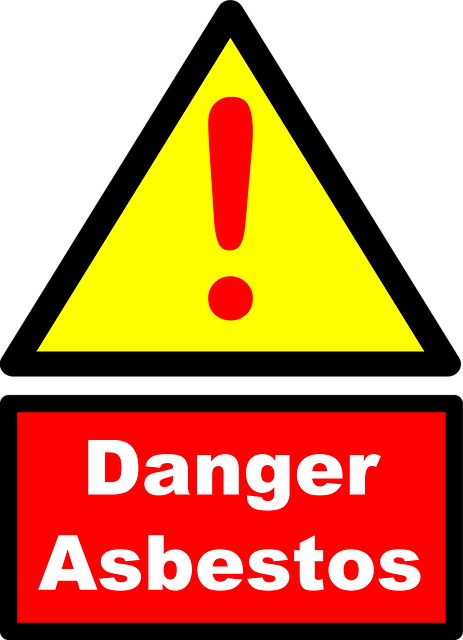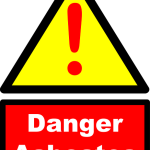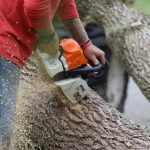Understanding asbestos surveys is essential for ensuring building safety during maintenance or demolition. These inspections identify and assess asbestos-containing materials, helping prevent health risks and regulatory breaches. Knowing the types of surveys, legal requirements, and how to choose qualified professionals empowers property owners to manage asbestos responsibly and confidently. This guide clarifies key aspects to help you navigate the process effectively.
Comprehensive Guide to Asbestos Surveys in the UK
An asbestos survey is an essential process to identify, evaluate, and manage asbestos-containing materials (ACMs) within a building, ensuring the safety of occupants and legal compliance for property owners. These surveys provide detailed insights into the presence and condition of asbestos, helping to prevent health risks and facilitate lawful building management.
In the same genre : Maximize your efficiency with tailored IT managed services
Professional Asbestos Survey Services in South East London play a vital role in this process. They are equipped to conduct thorough inspections, whether for routine management or urgent demolition projects. Property owners requiring trusted expertise can rely on specialists with industry accreditation, such as UKAS, to deliver accurate results efficiently.
Types of Asbestos Surveys
Understanding the different survey types assists in selecting the right assessment for your property:
Also to discover : Discover tailored financial planning in kings lynn
Management Surveys: Focused on ongoing safety in occupied buildings, these inspections are non-invasive and involve visual checks with minimal sampling. They help create asbestos management plans and registers, enabling dutyholders to monitor ACMs and prevent disturbance.
Refurbishment or Demolition Surveys: Required before major renovations or demolition, these are comprehensive, invasive assessments designed to locate all ACMs, including hidden or inaccessible materials. They often involve destructive methods and necessitate vacating the premises to ensure worker safety.
Legal and Practical Importance
Legislation obligates property owners to conduct asbestos surveys before any refurbishment or demolition work, especially on buildings constructed before 2000. Performing these surveys helps comply with regulations and mitigates the risk of penalties or legal action in case of asbestos-related incidents. Qualified professionals use safe sampling techniques to confirm asbestos presence, as this is the only definitive method.
Choosing a Qualified Provider
Selecting a reputable surveyor with proper qualifications, experience, and UKAS accreditation ensures reliability. They operate under strict health and safety protocols and guarantee impartiality throughout inspection and reporting. This professionalism guarantees tailored solutions for your property’s specific needs, whether for residential, commercial, or industrial purposes.
Regular re-inspections enhance safety management, verifying that ACMs are in good condition and unaltered over time. These follow-up surveys help maintain legal compliance, especially in buildings that undergo frequent changes.
Effective asbestos management hinges on accurate, detailed reports, which include diagrams, samples, and recommendations for safe handling or removal. Costs vary based on property size and complexity but investing in a thorough survey is crucial for avoiding future hazards and ensuring property value.
Supernova Asbestos & Fire Experts exemplify best practices by offering comprehensive services, including Management Surveys, Re-Inspection Surveys, and targeted testing. Their high standards, rapid turnaround times, and experienced team provide clarity and peace of mind to clients across London and the UK.
The Role and Process of Asbestos Inspection Services
Precision in asbestos inspection services is vital for identifying and managing risks hidden in building structures. At the core, a licensed inspector’s role is to conduct an evidence-based building asbestos risk assessment, using well-established survey techniques for asbestos detection. The process begins with visual examinations of materials likely to be asbestos-containing, progressing to targeted sampling—these asbestos testing procedures are the only way to confirm the presence of asbestos fibres.
Qualified professionals carry out residential and commercial asbestos inspection services following strict legal standards, utilising PPE and advanced tools to prevent contamination. For example, a typical risk assessment will cover insulation, floors, textured coatings, and any material disturbed during planned works. All findings are compiled in detailed asbestos survey reports with floor plans, photos, and laboratory results to aid in management decisions.
A comprehensive asbestos management plan is created using the survey’s data, guiding property owners on safe action and ongoing monitoring. Reports not only clarify the location and condition of asbestos-containing materials but ensure all legal and health requirements for asbestos survey regulations UK are met. The asbestos survey checklist used during inspections ensures that all relevant areas and forms of asbestos are assessed, from pipe lagging to wall panels and roofing.
Costs for asbestos surveys are impacted by property size, complexity, and access difficulties. Licensed and local experts provide clear pricing, explaining how detailed and accurate reporting can protect investments and lives.
The frequency and scope of these surveys directly relate to property use and regulatory updates. Asbestos survey frequency recommendations often advocate annual re-inspection for properties known or suspected to contain asbestos. Whenever alterations or maintenance are planned, another building asbestos risk assessment is critical to prevent disturbance and exposure.
Failing to follow best practices in asbestos inspection services exposes occupants to severe health risks from asbestos exposure. Up-to-date asbestos management plans built from thorough surveys are a legal and ethical obligation for property managers—the difference between regulatory compliance and costly liability. Each stage of the inspection and testing process is documented, providing a robust audit trail that is indispensable for future works and safety audits.
Types of Asbestos Surveys and Their Specific Procedures
Management Survey Details
Precision in asbestos inspection services begins with the Management Survey. This approach is designed to support ongoing building use without disturbance. Surveyors focus on accessible locations, using non-invasive asbestos testing procedures and visual assessments to spot visible asbestos-containing materials (ACMs). Minimal sampling is done, just enough to verify the asbestos identification process and update the property’s asbestos register for future reference.
A Management Survey forms the basis of comprehensive asbestos management plans, essential for both residential and commercial settings. Guidance is clear: these surveys are ideal when regular occupation is expected and no major refurbishment is on the horizon. Documentation from these inspections should highlight floor plans, areas surveyed, and any limitations—since restricted areas are presumed to contain asbestos until inspected directly. Each survey follows strict health and safety protocols to limit the risk of fibre contamination, a best practice recommended by all licensed asbestos survey companies.
Refurbishment and Demolition Surveys Explained
A Refurbishment or Demolition Survey is indispensable when extensive changes are planned. It uses intrusive survey techniques for asbestos detection to uncover every instance of ACMs, including those that might be hidden behind walls or under floors. This process is often mandatory for compliance with asbestos survey regulations UK, demanding that premises be vacated for safety.
The asbestos identification process here goes far beyond visual checks. Detailed sampling is conducted across suspected materials throughout the risk zone, targeting pipe lagging, textured coatings, wall panels, and more—anything disturbed by construction works. Results are swiftly processed using advanced asbestos testing procedures in accredited labs, ensuring reliable detection of hazardous fibres. Reports are comprehensive, mapping out all findings and instructions for safe handling or asbestos removal and remediation.
Differences in Procedures and Cost Implications
Comparing these two types of building asbestos risk assessment reveals distinct advantages and demands:
- Management Surveys rely on less invasive methods and targeted sampling, reducing disruption and lowering overall asbestos survey costs and pricing. They suit ongoing occupation scenarios and scheduled re-inspections.
- Refurbishment/Demolition Surveys are more complex. Their comprehensive sampling and invasive techniques mean higher costs, but they are critical for legal compliance and occupational safety during major building works.
It is important to factor early on which survey suits the project; early selection of a Refurbishment/Demolition Survey, for example, may be cost-efficient if renovation is imminent. This approach not only aligns with asbestos survey legal requirements but also limits repeat expenses from multiple surveys.
Effective asbestos inspection services bolster safety, regulatory compliance, and confidence for property owners—whether for residential asbestos inspection or in line with commercial asbestos survey guidelines. The right survey, performed by licensed asbestos survey companies with robust quality systems and adherence to UKAS standards, remains the gold standard in building asbestos risk assessment and long-term asset management.
How to Choose a Qualified Asbestos Survey Provider
Selecting the right provider for asbestos inspection services begins with verifying their accreditation and experience. The most reliable licensed asbestos survey companies are those with UKAS recognition, as this reflects compliance with leading asbestos survey regulations UK standards. Accreditation assures property owners that surveyors follow strict health and safety standards and employ validated asbestos testing procedures throughout each project.
Essential Criteria for Selection
A professional entity offering building asbestos risk assessment should demonstrate several key attributes:
- UKAS Accreditation or Equivalent: Accreditation by UKAS or an equivalent independent body confirms providers consistently meet regulated documentation standards, offering a higher level of trust for both commercial asbestos survey guidelines and residential asbestos inspection needs.
- Surveyors’ Experience and Training: Skilled surveyors have a thorough understanding of the types of asbestos inspections relevant to both large industrial sites and private homes. Their qualifications should reflect thorough asbestos awareness training, ensuring competency in identifying asbestos-containing materials and managing associated risks.
- Comprehensive Reporting and Transparent Pricing: Reports must fully follow the reliability factors stipulated by asbestos survey regulations UK. Look for companies that provide clear asbestos survey costs and pricing structures. Well-structured survey reports—which may include site plans, photos, and laboratory testing results—allow clients to interpret findings for direct asbestos management plan creation.
Utilising the right provider for asbestos surveys and air monitoring is not only a means to compliance but to peace of mind. Providers specialising in accredited surveys will typically operate under robust quality systems. This is essential when choosing surveys near London, or in areas like Manchester, Glasgow, Birmingham, or Essex—where local providers should also demonstrate fast response and flexibility for emergency surveys or urgent pre-demolition assessments.
Cost, Duration, and Reporting of Asbestos Surveys
Average Asbestos Survey Costs and Pricing Factors
For a standard residential property, survey costs can start around £260 plus VAT for a five-bedroom house. The final cost depends on the survey type, property size, and the extent of sampling needed. Larger buildings or those with complex layouts usually require more extensive inspection services, increasing overall costs. For commercial or multi-storey properties, additional charges may arise due to the need for advanced survey techniques and more intricate access requirements.
Breaking down cost components:
- Surveyor’s fees: Cover skilled labour, on-site inspection, and time.
- Sampling and lab analysis: Costs are impacted by the number and complexity of suspected ACMs, as detailed in testing procedures.
- Report preparation: High-quality reports are produced by qualified professionals and include plans, results, and recommendations.
- Extra fees: Invasive or after-hours surveys, especially pre-demolition assessments, incur further costs.
Affordable inspections are rare for large or complex properties, but comparing quotes from licensed companies can help you balance pricing with service quality.
Expected Timeframes and Report Content
A typical building asbestos risk assessment visit takes one to two hours for most homes, with on-site times extending for larger commercial premises, especially in zones identified as risk areas in buildings. Reports are often delivered within 24 to 48 hours after the inspection, expediting compliance and project planning.
Reports must present:
- Clear diagrams marking asbestos-containing material detection points.
- Laboratory testing results specifying asbestos type and fibre concentration.
- Practical recommendations for management or removal and remediation.
- Location photographs and details of all survey techniques used. A robust report forms the cornerstone of a comprehensive management plan and ensures dutyholders can meet legal requirements confidently.
Importance of Accurate and Clear Reports
Clear, accurate documentation standards are essential. Decision-makers depend on these to prioritise remedial actions, schedule removal and remediation, and safeguard workplace or resident health. Interim management strategies hinge on knowing precisely what was sampled and which risk zones were fully inspected—a crucial feature for anyone following commercial survey guidelines.
Surveyors must avoid using excessive disclaimers or vague caveats. Diagrams and maps should be unambiguous, with a thorough record of all tested and inaccessible areas. All reports should align with accreditation body guidance and adhere to robust UK legal standards, safeguarding against oversight and ensuring survey reliability.
This approach ensures that property owners, managers, and buyers know what to expect regarding costs, procedures, and outcomes from inspection services, setting a strong foundation for safe and legally compliant property stewardship.
Health and Safety, Regulations, and Legal Considerations
UK law mandates strict compliance with asbestos survey regulations UK under the Control of Asbestos Regulations 2012. Before any refurbishment or demolition, a survey must be performed to assess the building asbestos risk, identifying asbestos-containing materials (ACMs). This legal requirement exists to shield occupants and workers from the health risks of asbestos exposure—lung cancer, mesothelioma, and asbestosis can all stem from improper management. Building owners, dutyholders, and contractors are directly responsible for ensuring a suitable inspection services provider undertakes surveys before works commence.
Maintaining Legal Compliance
To remain compliant, dutyholders must implement management plans, regularly updating records through ongoing testing procedures and re-inspections. Documentation must detail dates, locations of detected ACMs, and actions taken. Compliance is not a one-off task: frequency recommendations suggest at least annual reviews, and following any significant property changes. Proper record-keeping, including clear reports in accessible formats, is central to satisfying regulators and preventing legal consequences. Buildings with historic ACMs must demonstrate ongoing controls as evidence of legal compliance.
Health and Safety During Surveys
Surveyors are required to wear suitable PPE throughout inspection services, minimising any chance of fibre release and accidental inhalation. Controlled sampling and strict decontamination of equipment are core safety procedures during surveys. Survey techniques involve methods that prioritise the safety of both surveyors and building occupants—key aspects in all types of inspections, from residential inspection to pre-demolition surveys. Ensuring survey reliability reduces the likelihood of risk zones in buildings being overlooked, thus maintaining high health and safety standards.
Certification and Accreditations
Reliability in the identification process depends on appointing licensed companies employing professionals meeting recognised standards. UKAS accreditation is the benchmark for trusted accreditation bodies. Professionally certified surveyors follow established commercial guidelines, from the initial building risk assessment through to detailed risk reports. Their specialised training and ethical practice guarantee that reports are both accurate and actionable, providing the foundation for compliant and safe removal and remediation, as well as future management strategies post-survey.
By embedding these processes, property stakeholders ensure legal adherence, reduce health risks of asbestos exposure, and enable safe ongoing management of asbestos in older buildings, fulfilling all necessary legal requirements.
Practical Tips for Building Owners and Occupants
Asbestos in older buildings requires a vigilant and proactive approach. Owners of historic or ageing properties should prioritise scheduled inspection services, as older structures are often higher-risk for hidden asbestos-containing materials. Begin with a thorough building asbestos risk assessment using professional survey techniques—not only visual checks, but also material sampling—especially if changes, maintenance, or renovations are anticipated.
For those considering a preliminary DIY risk assessment, proceed with caution. Limit any disturbance of suspect materials, and never attempt invasive checks. Instead, use visual cues: damaged insulation, textured coatings, or vinyl tiles may indicate a need for further investigation. Any suspicion should immediately prompt a formal identification process by an accredited professional, ensuring all health and safety standards are observed.
Upon detecting or suspecting asbestos:
- Evacuate the affected space where disturbance may have occurred.
- Do not try to clean, sample, or disturb the materials without training.
- Arrange a comprehensive testing procedure through local providers or licensed companies.
Planning and Budgeting for Asbestos Management
Engage in early planning by incorporating inspection services during property acquisition, redevelopment, or routine maintenance schedules. Factor the potential need for residential inspection or commercial survey guidelines into project timelines—delays can increase risks and costs.
Budgeting should account not only for survey costs (which may vary depending on locations such as surveys in Birmingham area or surveys near London), but also for possible removal and remediation expenses. Seek transparent quotes, confirm the scope, and understand how different types of inspections impact the total cost.
Post-Survey Actions and Continuous Management
Once you receive your survey reports, interpret them with care:
- Confirm diagrams, room references, and sample locations are accurate.
- Use the report’s management plans to guide ongoing management and safety protocols.
- Schedule regular re-inspections as per frequency recommendations, ensuring any previously identified asbestos-containing materials are monitored for deterioration, especially in high-use or vulnerable areas.
If the report confirms the presence of asbestos, partner with licensed surveyors whose qualifications are crucial for removal or remediation. Never permit untrained personnel to carry out removal and remediation, as the health risks of asbestos exposure are substantial and regulated by strict UK regulations.
Leveraging Professional Services for Safe and Effective Outcomes
Consulting experienced specialists for inspection services and testing procedures is the most reliable way to guarantee safety and legal compliance for both residential inspection and commercial properties. Accredited bodies, such as UKAS, standardise best practices in the industry, ensuring consistent, accurate results.
Comprehensive management demands that all work, from initial building risk assessment to final remediation, follows legal requirements. Dependable local providers will help navigate the identification process and maintain up-to-date management plans, allowing owners and occupants to focus on everyday activities with greater peace of mind.
Types of Asbestos Inspections and Key Procedures
Precision Q&A: What are the main types of asbestos inspections? There are two primary types: a management inspection, required for ongoing property use, and a refurbishment or demolition inspection, which is necessary before any intrusive work. Each type involves systematic processes to identify and manage asbestos-containing materials.
Types of Asbestos Inspections
Management inspection services are carried out during normal property occupation. Their main function is to update the management plans by visually assessing accessible areas and collecting minimal samples only when needed. This is vital for regular building risk assessments, especially in older structures, and supports both commercial and residential inspection needs. If certain zones cannot be safely reached, these are presumed to contain asbestos until a proper assessment is possible. This presumption ensures continued compliance with UK regulations.
Refurbishment and demolition inspections, sometimes referenced as pre-demolition surveys, are mandatory before any major building work: these are highly intrusive. The goal is comprehensive asbestos-containing materials detection, using survey techniques that can include partial destruction to access hidden materials. These inspections ensure legal requirements are met and minimise risks to contractors and occupants. Testing procedures adopted here may involve extensive sampling and often air monitoring if fibre disturbance is likely.
Asbestos Identification and Testing Procedures
Reliable identification process begins with a visual review followed by targeted sample collection. In accredited inspection services, trained technicians adhere to strict safety procedures during surveys. They wear full PPE while using specialised equipment to safely capture material samples—this is standard for both residential and commercial properties in risk zones in buildings. Collected samples are analysed in certified laboratories using techniques like polarised light microscopy or electron microscopy, verified by recognised accreditation bodies.
An effective building risk assessment draws on these results to populate an asbestos register as part of management plans. Findings are summarised in clear reports through diagrams, sample maps, and results interpretation. These reports are crucial for both owners and contractors, guiding safe work and removal and remediation steps.
Regulatory Fundamentals and Survey Frequency
England’s regulations require that all non-domestic buildings constructed before 2000 maintain up-to-date asbestos registers and complete new inspections before planned disturbances—especially for properties in London and nearby boroughs, where older housing stock is common. Frequency recommendations highlight the need for at least annual re-inspections as part of ongoing management. Surveys for schools, hospitals, and commercial sites follow similar protocols to safeguard occupants.
Asbestos Survey Reliability and Best Practices
Reliability factors include quality of access, diversity in sampling, and the training/independence of surveyors. Licensed companies and surveyors’ qualifications, along with robust internal audit and impartiality mechanisms, ensure accurate results. When reviewing reports by specialists, dutyholders should cross-reference findings with the provided checklist, confirming all high-risk zones have been tested and all sampling procedures meet required standards.
Summary Table:
- Management Survey: Visual + minor sampling, regular updates.
- Refurbishment/Demolition Survey: Intrusive, large-scale sampling, always before building work.
- Testing Procedures: Careful sample collection, lab analysis, PPE use, air monitoring if needed.
- Regulatory Needs: UK regulations, annual reviews, accredited inspectors.
- Reliability: Qualified, independent professionals, clear reporting.
Meticulous adherence to these best practices protects against the health risks of asbestos exposure and guarantees that legal responsibilities are consistently fulfilled.











